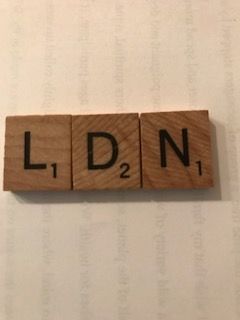
Low Dose Naltrexone or LDN has been life-changing for so many for a long time. This relatively low-cost opioid antagonist prescription drug continues to gain traction for its potential benefits in various conditions, especially those that impact the immune system and cause chronic pain and inflammation. (1)
Let’s have a closer look at some successful uses of LDN.
Fibromyalgia
Approximately 10 million people in the US are affected by Fibromyalgia, making it one of the most widespread types of chronic pain. This chronic condition is characterized by muscle and joint pain but is also often accompanied by a number of other symptoms including anxiety, insomnia, and fatigue. LSN has been a new source of hope in treating chronic muscle pain of those with fibromyalgia. (2)
Rheumatoid Arthritis
For those with RA, a chronic inflammatory disease in which our immune system starts attacking healthy cells by mistake — causing widespread pain and red, swollen, inflamed joints — LDN may be an answer.
Researchers say LDN slowly [gets] into the central nervous system and calms down the over secreting of cytokines thereby over time lessening the inflammatory response and improving pain. (3)
Gastrointestinal Disorders
LDN’s powerful immune-modulating effects are worthwhile to look at for those with inflammatory bowel disease, especially the two main types — Crohn’s and Ulcerative Colitis — which can lead to debilitating complications and often leave patients with a lowered quality of life. LDN is known to have fewer side effects than the traditional medications used to treat these conditions. LDN can also help in the treatment of SIBO – small intestinal bacteria overgrowth and many issues that are overall connected
to gut health including celiac disease, leaky gut syndrome, IBS, and malabsorption. (4) (5)
Multiple Sclerosis
Studies show that LDN is safe and easily tolerated by those with MS, in which the immune system malfunctions and destroys the fatty substance that coats and protects nerve fibers in the brain and spinal cord known as myelin. While not improving the disease process and progression itself, LDN has been successful in helping with pain and fatigue management. (6)
And the list goes on — LDN research continues on its use for:
· Hashimoto’s and Graves Auto-immune Thyroiditis
· Parkinson’s disease
· Depression
· Lupus
· HIV/AIDS
· Autism
Dosing LDN
Remember it is critical to work with your doctor and a compounding pharmacy knowledgeable in all the strategies that can help ensure success with LDN. This is primarily because dosing is tricky and there is no single dose that will work for every person. Some find that a daily dose as low as 2 mg is effective, and others have found that they achieve the greatest benefit using two doses of 4.5 mg each day (12 hours apart). Clinical trials have so far shown a single daily dose of 4.5 mg to be effective for most users. (7)
Another practice is to titrate LDN at 1.5 mg at bedtime for 14 days, then 3mg at bedtime for 14 days, then 4.5 mg at bedtime ongoing. If patients have side effects at the 4.5 mg dosage, then they are taken down to a 3mg dosage.
1) https://www.ncbi.nlm.nih.gov/pmc/articles/PMC3962576/
2) https://pubmed.ncbi.nlm.nih.gov/28325149/
3) https://www.ncbi.nlm.nih.gov/pmc/articles/PMC3592351/
4) https://pubmed.ncbi.nlm.nih.gov/23965429/
5) https://pubmed.ncbi.nlm.nih.gov/29607497/
6) https://www.ncbi.nlm.nih.gov/pmc/articles/PMC5669439/
7) https://www.ncbi.nlm.nih.gov/pmc/articles/PMC6313374/


